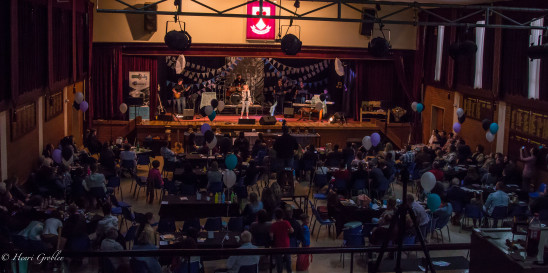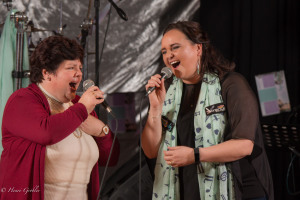
I’ve been a vocal coach for the last 20 years of my life and completed my VMT training in 2013. At this stage I have 50 students, but I’m also principal of Ovie-Vibz music school that currently has 14 teachers and 250 students. The reason I’m telling you this is because I would like to show you how VMT is not only applied in my individual lessons, but in all aspects of our music school.
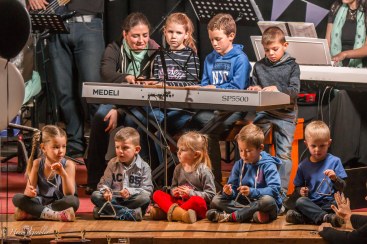
I am a teacher rather than a therapist, and VMT has given me the chance to apply the VMT principals in how I run the music school how I treat the teachers and the opportunities I create for the students. VMT creates a valuable therapeutic outcome.
VMT greatly influenced my approach in teaching and how I manage a music school. In this post, I would like to give you an idea of that.
VMT in my vocal lessons – My students do warm-ups where we use free vocalising and using all timbres and violin*. We also apply the above when starting with a song. The song can be “Coloured in” for example by starting in flute for the first verse, in the chorus you can apply clarinet. The second verse can move into saxophone and the bridge can be in violin / clarinet to get to the climax in the double chorus at the end.
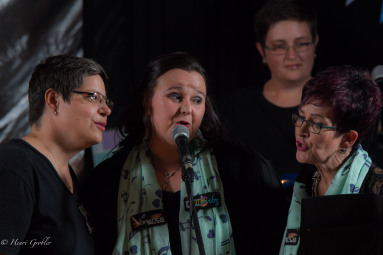
When working with vocal students there are a lot of emotions. I’ve learned that every student need something different from the vocal lessons. The one student comes to the lesson to laugh, because her parents are too strict and she rarely has a chance to laugh at home. The next student needs to just sing and put all her emotions into it and just let go! Her mother is going through a second divorce, so there is a lot of tension at home and her singing lessons are her outlet. One student is bullied at school; singing is the one thing that she excels in, so we are working on making it even better and building confidence. She feels low and depressed sometimes where she doesn’t want to do anything. VMT enables me to meet her where she’s at, sometimes its song writing, sometimes it’s free vocalising in a playful manner and sometimes it’s doing theory or trying out new songs.
The other teachers – musicians are a bit different and can be a challenge to manage at times.
VMT helps me manage my work with the teachers successfully.
First, the most important aspect for me is making sure they all feel save and therefore I have a see-through policy, to create containment. During our training one of the things that I learned and valued is that everything that happened everyone knew about. There was never something that happened in secret and that made us all feel safe and protected.
Secondly, we have a weekly session where the teachers are welcome to let go and just be. VMT taught me two words – it’s ok! Meaning sometimes I want to feel angry or sad, sometimes I want to cry or even swear and all of this ok! It’s important to not keep it in and bottled up. I also have to acknowledge my shadow and allow myself to feel the emotion so that it doesn’t influence how I react towards others and especially my students. This is a space for all the teachers to acknowledge all emotions and give it a voice! Sometimes we laugh, sometimes we cry, sometimes we sing and sometimes we discuss the difficult lesson we had or the difficult parent. There is no specific structure we just meet each other where we’re at.
Opportunities – I believe in giving the students as many opportunities as possible. We have 4 performing opportunities in front of a friendly audience (no one judging or examining so every student is free to express themselves in any way). The two smaller “recital” concerts which are open spaces for any student to express themselves freely.
We have our two big concerts. One where they make a recording in
a professional studio and one where they perform with a live band. To perform with other musicians like this is a highlight for most of our students. At these concerts it is all about the students, the VMT components give the students more confidence and helps them to colour the songs in! There is no right or wrong.
The aim with the concerts and everything else we do, is to create opportunities for the students to give their “authentic” voice wings. We want to make their dreams a reality!
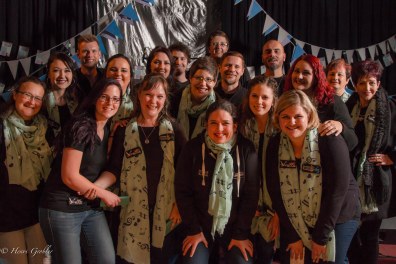
* Timbre is the type of sound that you hear and how it’s made. (When you tap against a wooden board it will create a completely different sound than against a piece of glass and it can still be the exact same pitch)
To understand this you have to think of a long tube like a wind instrument, but other than a wind instrument that is a fixed shape your tube can change size and shape. It can grow longer and shorter and therefore create different wind instrument like sounds. When you think of a flute in comparison to other wind instruments it is very small and thin. So when you think of your voice as a thin small tube you can get a flute like sound. Now see a clarinet in your minds’ eye – it is almost double the width of a flute and even longer than the flute. Therefore if you want to create a clarinet like sound you need to make your tube longer and wider and you can accomplish this by relaxing your jaw and whole body completely. The last instrument I’m going to refer to is a saxophone. A saxophone is even bigger than a clarinet, and the shape is completely different it’s almost as if the shape forms a tummy at the bottom where the sound is coming from. Therefore to create a saxophone like sound you have to extend the vocal tube to your tummy and use the whole tube from your tummy to create the sound. The ending of the saxophone is much wider than the other instruments mentioned therefore your mouth also have to be very open and wide – you can get a yawn like feeling when you sing in saxophone.
If you have to think about one instrument that will cut through anything I’m sure some or other stringed instrument will come to mind. In comparison with wind instruments a stringed instrument is much more external, because you don’t use breath that comes from within the body, therefore to create a violin like sound you have to focus on you mask (Your mask is the front part of your face). If you focus on your mask and nose you will create a sound that can cut through anything just like a violin in an orchestra.
By Lerina van Rensburg, VMTR
